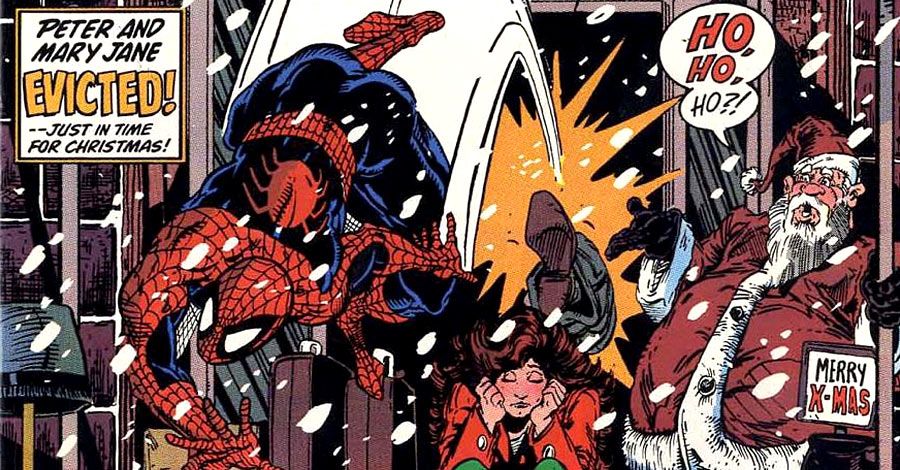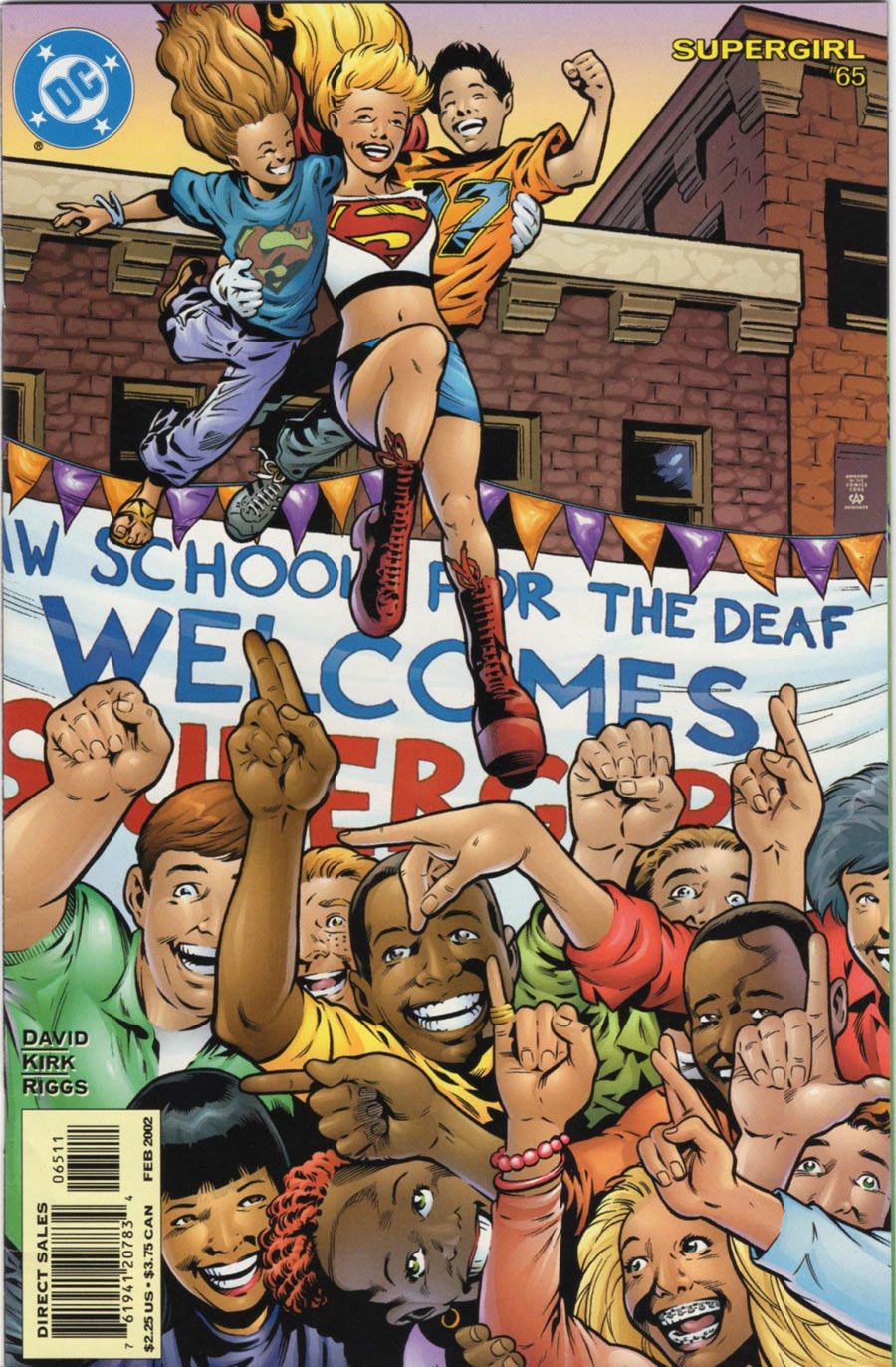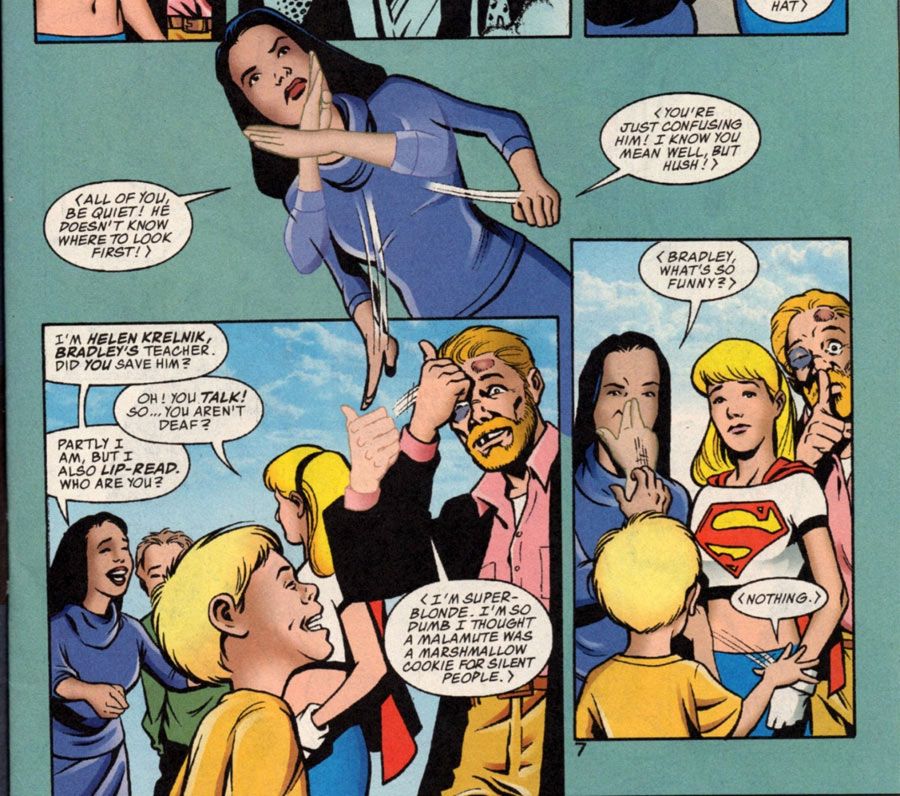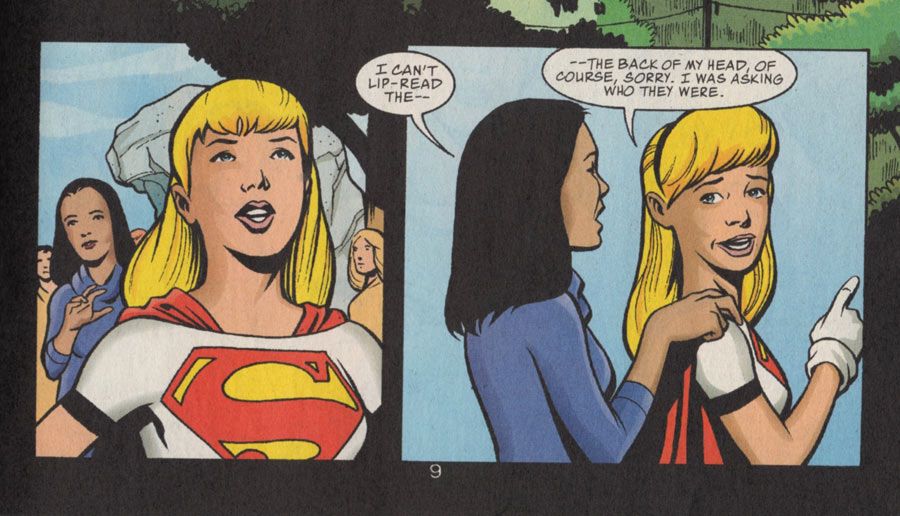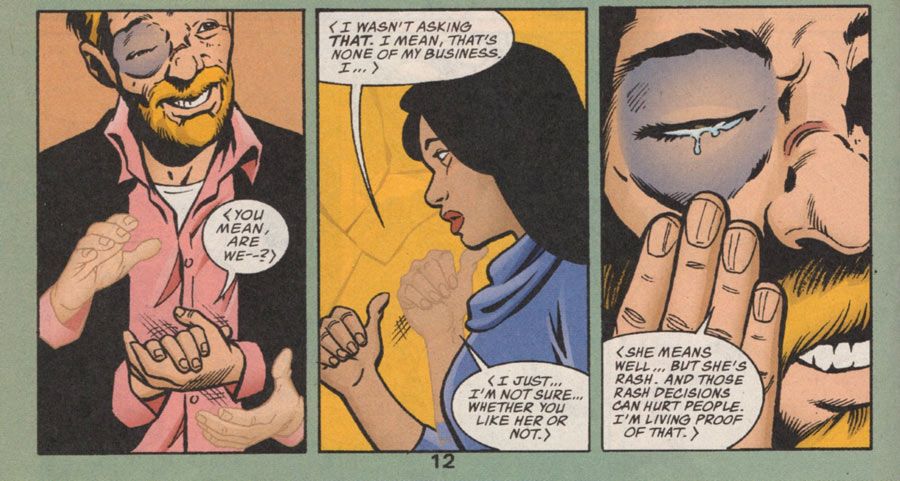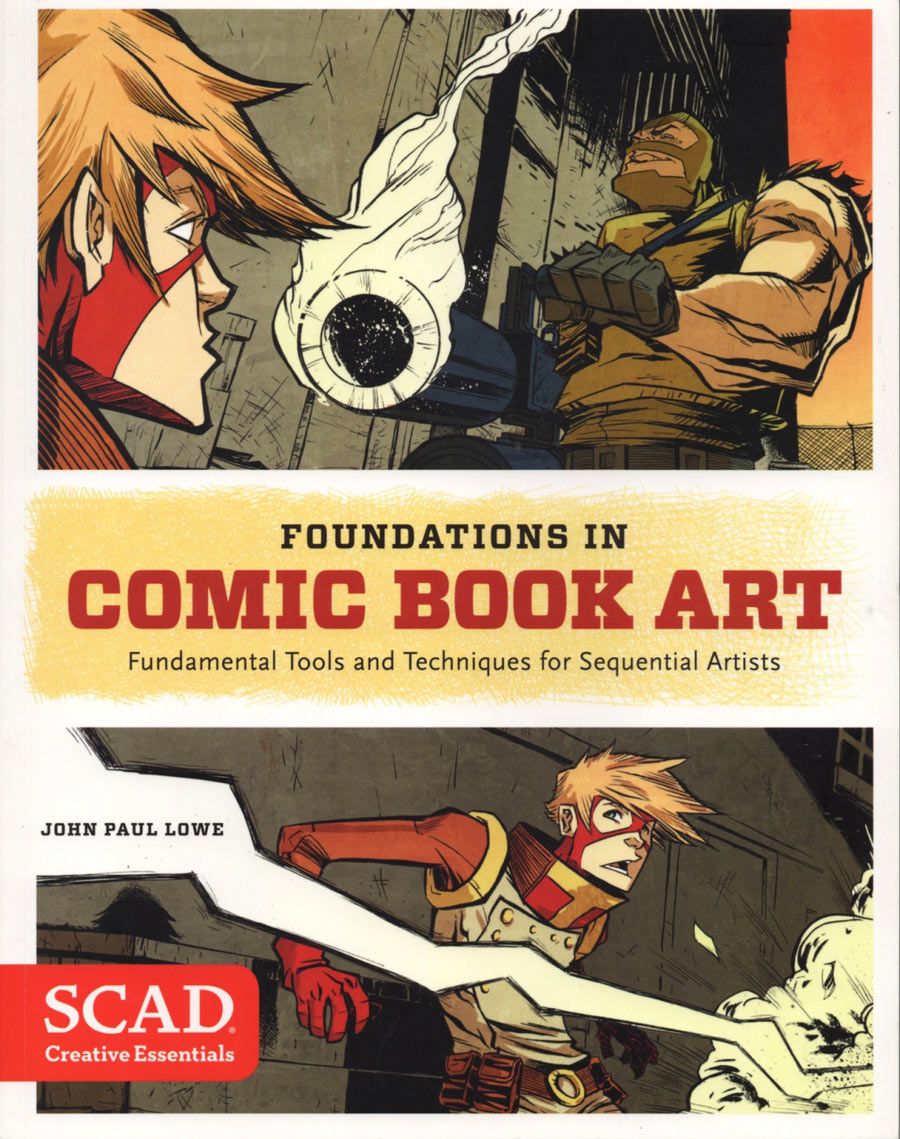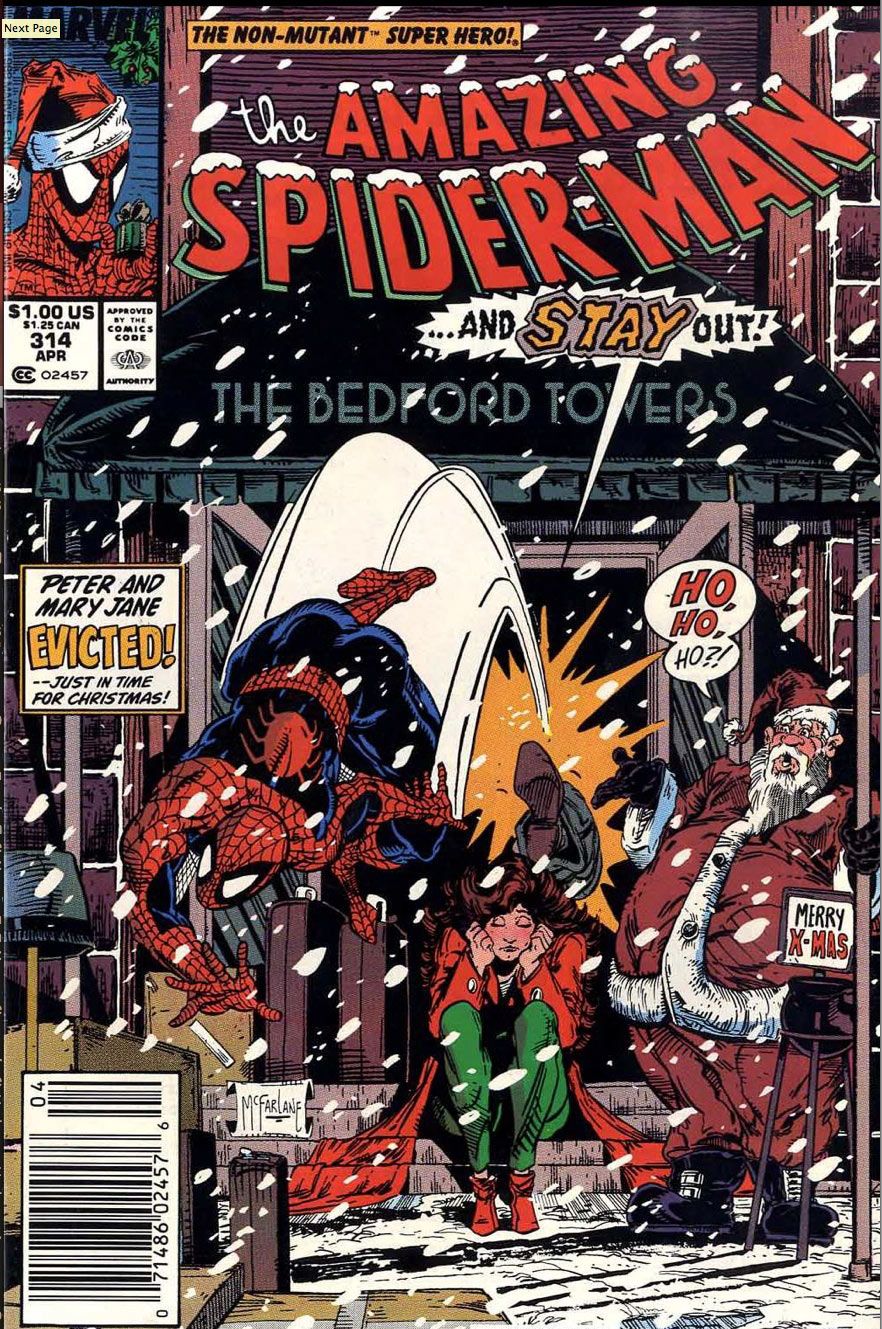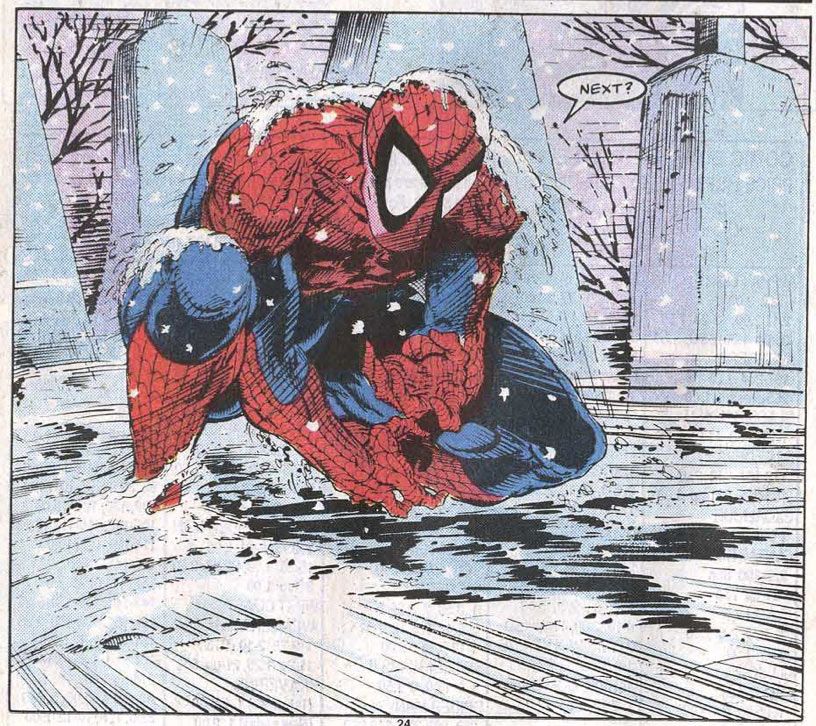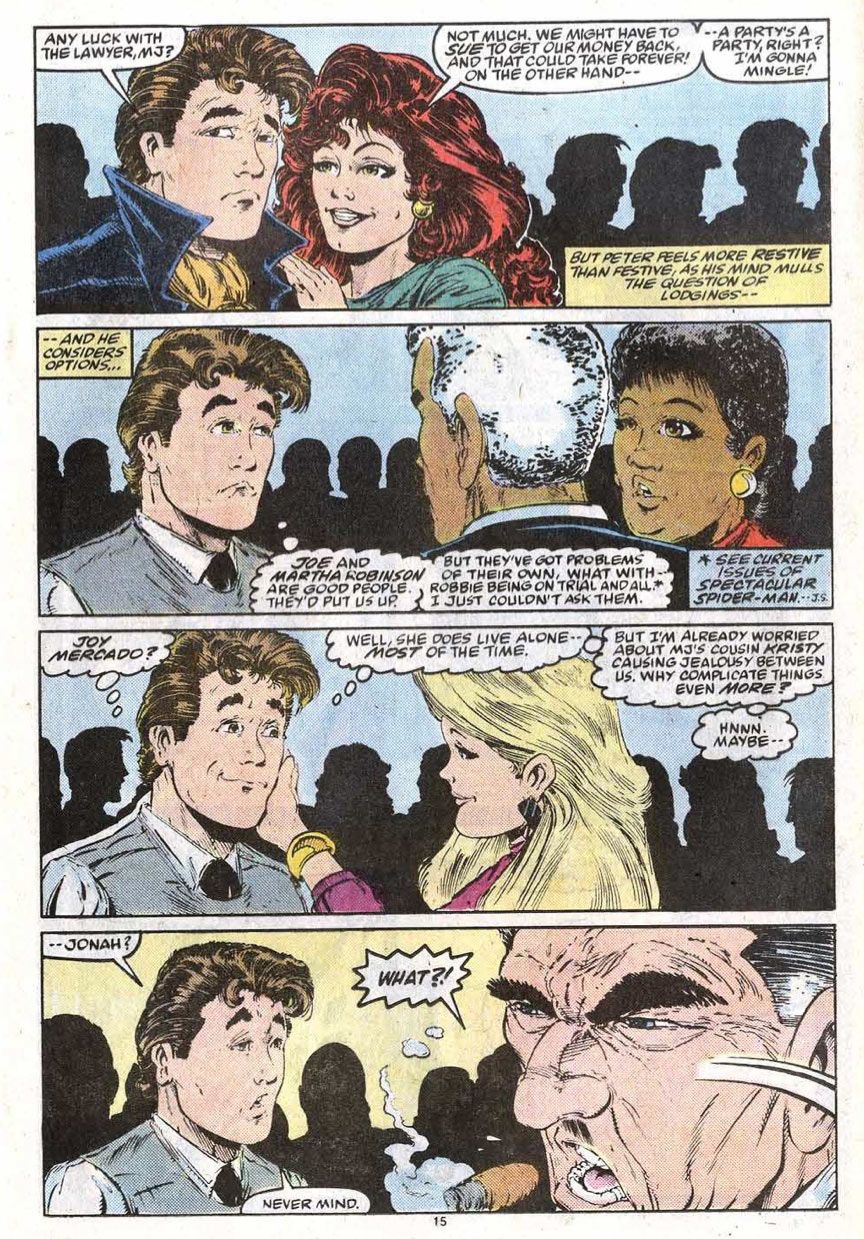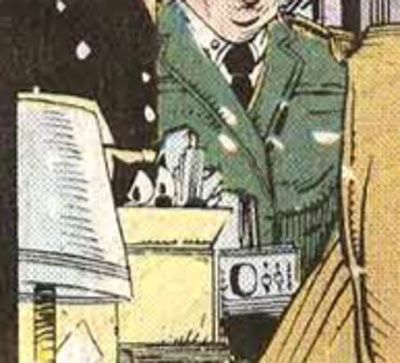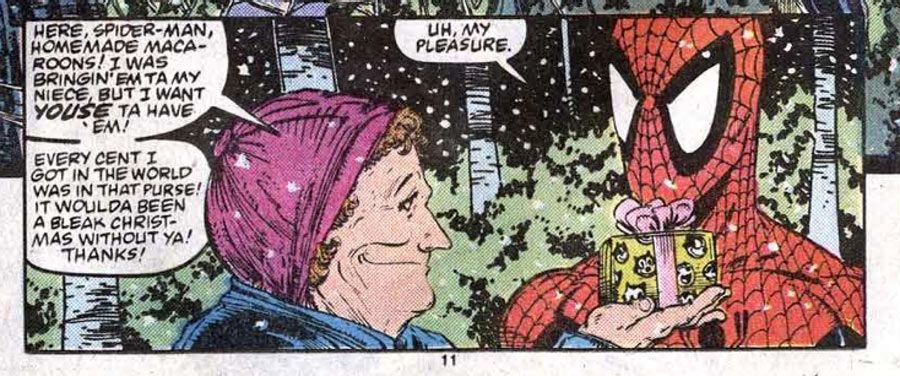ANOTHER COMIC WITH ASL
Did you enjoy the recent sign language issue of "Hawkeye"? I'm waiting for the next hardcover, so I haven't seen it yet, but it did bring back one fond memory: Peter David and Leonard Kirk did an issue of "Supergirl" ten years ago that was impressive, also.
That "Supergirl" series was a favorite at the time, with David doing a classic long run on a single character, giving him all sorts of time to go down side roads and explore a character at great depth. Linda Danvers was Supergirl in this incarnation, and at the time of this story was traveling around with a demon trapped in human form. Something like that. It's enough set-up to get you to the gist of the story.
In this issue, Supergirl saves a young boy who wanders out into the street, unaware of the truck barreling down the road towards him. This being 2004, the truck driver was also driving distracted by kissing his girlfriend in the passenger seat. If this issue were done today, I have no doubt he'd be texting, instead.
Supergirl and Buzz (the aforementioned demon) realize the boy is deaf and find the school for deaf children in the neighborhood. Buzz, as we learn in the issue, is a fluent signer and communicates with the boy and school owner in the way only he can. That is to say, he's hilariously charming to the deaf while lying to Supergirl about what he's signing. David milks that for great comedic effect, in what are the best parts of the issue.
The other even more impressive trick is how David and Kirk use silent panels to indicate when the deaf point of view character can't hear what's going on. The entire opening sequence with the deaf boy wandering out into the street, in fact, is a silent sequence, despite what would be a deafening noise of a braking truck and Supergirl stopping it the hard way.
The rest is almost boilerplate Big Business Is Evil comic book story stuff. The kids were born deaf due to the big polluter in town, who won't pay up and now hides behind their lawyers, etc. etc.
As a bonus, the boy in the issue's opening is also "special needs." They never describe it past that, but it seems obvious he's on the spectrum for Asperger's or Autism. In 2004, those things weren't omni-present and the name is glossed over. Today, every car in the issue would have a puzzle-shaped ribbon on its bumper sticker.
Supergirl acts in a dumb impetuous way. People get angry. Then there's an unbelievably happy ending thanks to the rest of the DC Universe. Spoilers: Supergirl enlists all her superpowered friends to bring attention to this town, and to shame the local company into paying up. With the new national attention, they're forced to. Of course.
So, yes, not the bravest or most creative plot ever, but the story has definite charms apart from its Hallmark Movie of the Week feeling.
Kirk's sign language obviously can't capture everything. He's limited by page and panel count, but he uses repeated images to show specific signs, many of which I recognized as being part of basic ASL. The cover shows the hands of the school kids signing out "Supergirl," which is neat. And they even include the alphabet in signs on the letters page at the back of the issue.
That said, I'm looking forward to the next "Hawkeye" hardcover now more than ever...
FOUNDATIONS IN COMIC BOOK ART
John Paul Lowe's new book from Watson Guptill, "Foundations in Comic Book Art: Fundamental Tools and Techniques for Sequential Artists" is a broad overview of the kind of technical skills an artist will need to have a career in comic book art. It casts its net wide, leaving some future research to the reader, but giving budding artists some serious technical advice that they ought to know. After reading it, you'll be motivated to practice, which is what you need most to learn.
The book is broken down into eight sections; the first five deal with learning to draw. Lowe gives an introduction to his technique of visualizing everything in blocks and sculpting what the artist sees from there. He breaks things down not just into individual basic shapes, but the kinds of shapes that might be chiseled out from a cube. It may not be the technique that wins for everyone, but it has some strengths that could be applied to almost any type of artist, whether their style is manga-flavored, funny animal, or grim and gritty superhero artist. The theory comes in handy, particularly, when dealing with perspective, which Lowe concentrates on in chapter three, and is the second longest part of the book.
If you've never thought about horizon lines and one-, two-, and three-point perspective, this book will provide a good overview and a brief introduction. Of course, it starts with learning to draw cubes and bisecting them and draw within them. It's all related, and it builds nicely. The illustrations that accompany the text help give some examples, though I thought a few of them might have been better chosen to simplify the matter down even more. I'm afraid some of the busier drawings might distract a reader from the perspective lines that were most important in the art.
Anatomy and "Visual Problem Solving" are given brief mentions, but they're not the point of this book. Lowe gives you resources to delve deeper into them, and once again provides exercises to help strengthen those skills. This book is not meant to be the new "Gray's Anatomy" (the book, not the TV show) or Eisner's "Comics and Sequential Art."
The sixth chapter on inking is the most in-depth one of the book. Even then, it's not about teaching you when to draw a thick line versus a thin line, or when to interpret the penciler's blue lines in a different way. This is nuts and bolts technical stuff. Lowe goes over the equipment he uses and names names: from brushes to nibs to paper weights to ink brands. He shows what you can do with those tools, with good examples. Exercises give you some ideas for what's possible, but it's left to the reader to figure how, when, and why. For that, the only book I can think of on this topic is another Watson Guptill publication, "The DC Guide to Inking Comics" by Klaus Janson.
Chapter seven discusses "Advanced Inking Techniques," which is to say how to ink with everything else under the sun, from Q-Tips to Manga Studio. Chapter Eight is the tech-lover's chapter, with a tutorial in drawing perspective grids in Photoshop or Manga Studio, as well as applying screen tones with Manga Studio. (That's something I had fun with when I gave Manga Studio 4 a spin.) It's a bit random and perfunctory, but it calls back to some lessons from earlier in the book.
The final book is short. You could read through it in one sitting, if you're motivated. Given the subject, it's easy to understand that the book is more graphics than text. But as a springboard for further learning -- it's written by a teacher at the Savannah College of Design, after all -- it's a motivating and eye-opening overview of the art of drawing comics. Like the title says, it's about the "tools" and the "techniques." Don't go into it looking for a detailed guide to sequential art storytelling theory.
It is available officially today from Watson Guptill. It's a softcover at roughly 8.5 by 11 inches in size, full color, 160 pages for $24.99. It'll make a great Christmas present for that budding artist in your family this winter, but it's not going to make you a comic artist overnight. It'll give you some solid pointers on how to practice to get there, though, with a list of tools to feel more professional with. The tools might not make the artist, but they might just give him or her a little extra confidence.
WHEN CON SUES CON
This feels like old news now, but I had to point it out as one of the best examples of poor timing in the history of comics. The folks behind the convention in San Diego currently referred to as "Comic-Con International: San Diego" have sued the Salt Lake Comic Con for using "Comic Con" in their name.
I don't blame a great many people who see this as petty and uncivil and stupid. That's the San Diego convention's fault for not protecting their brand a decade ago, as conventions started to get popular and everyone called their show a "Comic-Con." WizardWorld, of course, was the highest profile contributor to this erosion. If the folks in San Diego wouldn't sue the folks behind WizardWorld ten years ago, they've effectively decided to let their brand slide.
Suing the folks in Salt Lake now is way too late in the game for such a move. They've already lost, and Salt Lake Comic Con (notice the lack of hyphen) gets to bask in the glow of the Streisand Effect, and is producing press releases at a rate meant to capitalize on it. Good for them.
The only misstep the folks at Salt Lake Comic Con made was in sending their branded car out to San Diego to advertise their show. It's a silly thing to do; San Diego is an international show. Salt Lake Comic Con will be more of a regional show, at best. Advertising to an audience in San Diego that is 99% not in their own region is a waste of money and time, plus it has opened them up to this lawsuit.
Also, it's a bit tacky.
Is there something else going on? Or is this just the IP law firm under retainer by the folks in San Diego having a slow quarter? I don't know. It is head-scratching though, and I hope someone in San Diego clarifies the situation soon.
I'm all for the group in San Diego having the trademark on "Comic-Con" and thought it was nuts that they weren't defending it -- 15 years ago. In 2014, though, it's too little, too late. They've ceded that name. There are way too many people using it now.
The ultimate irony of the name, of course, is how minimized comics are at any even that labels itself a "Comic Con," with or without the hyphen.
One last note about the Salt Lake show: Check out their staff. It's close to a 50/50 mix between men and women. C'mon, they have the Black Widow as their Director of Operations. That's a smart show!
WIZARDWORLD FINANCIALS AND CRAZY SELF-ANALYSIS
WizardWorld, being a penny stock, has to release their financial information every quarter. They're back with a new report this week. Let me cut apart the press release to get to the highlights and see if you can follow where I'm going with this:
The Company hosted four comic cons in Q2 2014...
Convention revenue for period ended June 30, 2014 was $7,110,940, an increase of $4,209,524 (or 145%) from $2,901,416 reported in the comparable period in 2013....
The significant increase in revenue in 2014 is primarily accredited to the Company's team's dedication to delivering higher quality events, including better organization, more programming, and an exciting list of celebrities and artists to an increasing fan base, which all translates to higher revenue growth.
Wow, that is impressive. They more than doubled their profits year over year. Where did they pull in all that money from?
The Company ran eight events during the first six months ended June 30, 2014, as compared to four events during the comparable period in 2013.
Well, that certainly helps.
To sum up: WizardWorld made twice the profit with twice the number of events, and they credit "higher quality events" and better nerdlebrities for their success. Not the fact that they had twice as many events.
But here's the good news for WizardWorld:
Average revenue generated per event in 2014 was $1,535,517 as compared to $1,173,723 during 2013.
They're getting more bang for the buck. Or, at least, they're getting more money per event. In fact, they're actually profitable now! They went from being 9 cents per share in the hole to a penny per share in the black.
But to claim this turn of events this quarter is primarily because they're dedicated to their fans and not because they had twice as many events is a bit much...
PIPELINK. YUP, JUST ONE THIS WEEK.
- Music time: Saturday Morning Slow Jams, featuring "DuckTales." Good luck getting that one out of your head now. There's also videos for "Transformers" and "Animaniacs," amongst lots of others.
"THE AMAZING SPIDER-MAN #314": "Down and Out in Forest Hills"
In a special Christmas issue, the Parkers find themselves homeless, and an overworked accountant pulls a gun on his boss and has his crew kidnap Santa Claus.
Jonathan Caeser reaches out through his prison walls this issue, getting the Parkers evicted from their home on Christmas Eve through a legal maneuver. Peter's bruised ego won't allow him to move back in with Aunt May, leading to some soul searching at Uncle Ben's grave, where he stops an attempted mugging and a big time department store robbery. Ben's grave is within ear shot of an awful lot of crime, it turns out.
This is an issue without a costumed villain to deal with. McFarlane is left drawing people in regular clothes with their exaggerated facial features that he likes so much. The recurring characters look on-model, but the one-off characters get the big noses and ears and funny hair styles. It's McFarlane's playground. Without worrying about having to repeat the models past a page, McFarlane can stretch his artistic wings on the "civilians" and go crazy with them.
Spider-Man makes a couple of appearances, and they're memorable ones, including a striking dramatic crouched pose we see only after the action is over. That felt badly-timed -- why would Spider-Man ask who's next after he takes everyone down? -- but I forgive it because it looks cool.
Peter Parker's tribulations feel a little immature and slightly whiney for a man who's out of college and has been out on his own for a while. The idea that he doesn't want to move back "home" again is a familiar one for most adults, but given his situation he starts to sound too "A New Hope" Luke about it. He realizes the errors of his ways near the end and does the right thing by everyone's favorite, Aunt May, but the road getting there feels unnecessary. But I can cut a guy a break after his Christmas is ruined like that.
It does lead to the funniest moment of the issue, though, when Peter tries to work out in his mind who he could ask for help while at the Daily Bugle Christmas party. J. Jonah Jameson is always a good target for comedy, and it hits hard here.
Felix Watch: The black and white tabby makes two appearances in the issue. He appears on the splash page looking a little worried over the Parkers' eviction. He appears later in the issue on the wrapping paper of a grateful near-mugging victim who Spider-Man saves.
Next Issue: Hydro-Man! And Spider-Man takes down another trio of criminals. And, yeah, sure, that Venom guy everyone seems to like is in it, too...
Twitter || E-mail || Instagram || Pipeline Message Board || VariousandSundry.com || AugieShoots.com || Original Art Collection || Google+

